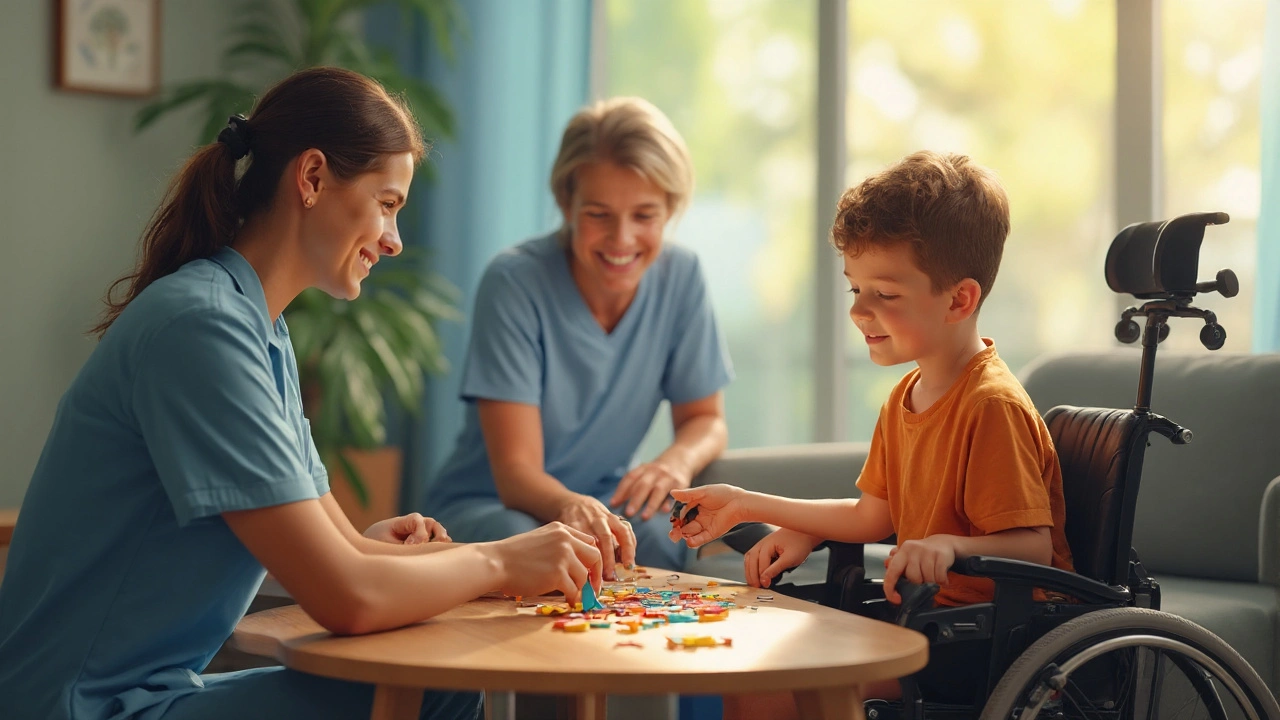Assistive Technology: Everyday Tools That Boost Independence
Ever wondered how a simple gadget can change daily life for someone with a disability? Assistive technology (AT) does exactly that – it’s a mix of devices, software, and adaptations that help people do tasks they’d otherwise find hard or impossible. From voice‑controlled lights to high‑tech prosthetics, AT is all about making life smoother, safer, and more independent.
What Is Assistive Technology?
At its core, AT is anything that supports a person’s functional needs. It includes low‑tech items like a jar opener or magnifying glass, and high‑tech solutions like screen‑reading software and smart wheelchairs. The key idea is to bridge the gap between a person’s abilities and the demands of their environment. It’s not just for people with visible disabilities; many seniors, students, and workers use AT to stay productive.
Choosing the Right Devices for Your Needs
Picking the right AT starts with a clear look at what you struggle with day‑to‑day. Make a list: Do you need help seeing text? Hearing conversations? Moving around? Once you know the problem, match it to a solution. For blurry screens, try a screen‑magnifier app. If you miss spoken cues, a personal amplification device can make a huge difference. Don’t forget to test a few options – many pharmacies, rehab centers, or online retailers let you trial products before buying.
Budget matters, too. There are free or low‑cost solutions like open‑source speech‑to‑text software, while more advanced devices may need insurance or a grant. Your local disability services office can point you to financial aid programs. Remember, the most expensive gadget isn’t always the best fit – usability and comfort win the day.
Another tip: keep technology simple. A device that’s hard to charge or program will end up gathering dust. Look for rechargeable batteries, clear instructions, and good customer support. When you buy, check the warranty and whether the manufacturer offers updates. An AT tool that evolves with software improvements can stay useful for years.
Integrating AT into daily routines takes a bit of practice. Start small – use a voice‑assistant to set reminders before moving on to more complex tasks like navigating a smart home. Pair devices when possible; a tablet with Bluetooth can control lights, locks, and thermostats all from one screen. The more you combine functions, the less clutter you’ll have.
Don’t forget the social side. Sharing your experience with a community, whether online forums or local support groups, can reveal hidden tricks and upgrades you’d never think of. People often share hacks like mounting a tablet on a wheelchair for easy access or using a simple foot‑pedal to control a computer mouse.
Ultimately, assistive technology is about empowerment. It removes barriers, gives confidence, and opens up opportunities that might feel out of reach. Whether you’re a student needing a note‑taking app or a senior looking for a safe way to move around the house, there’s an AT solution waiting. Explore, try, and keep fine‑tuning – the right tool can turn a daily challenge into a simple routine.
- September 25 2025
- 18 Comments
- Daryl Gardner
Duchenne Muscular Dystrophy: How Occupational Therapy Improves Daily Life
Explore how occupational therapy helps people with Duchenne Muscular Dystrophy maintain independence, manage symptoms, and improve quality of life through practical strategies and teamwork.
- Health & Medicine (103)
- Health & Nutrition (8)
- Caregiving & Dementia (2)
- Health & Wellness (2)
- Environment & Climate (1)
Categories
- December 2025 (24)
- November 2025 (22)
- October 2025 (27)
- September 2025 (38)
- August 2025 (5)
- July 2025 (4)
Archives
- side effects
- medication side effects
- generic drugs
- dosage
- online pharmacy
- gut health
- generic substitution
- safety and side effects
- natural antioxidant
- coping strategies
- hypertension
- immunosuppressants
- mental health
- medication adherence
- drug safety
- NTI drugs
- narrow therapeutic index
- combination therapy
- black box warning
- autoimmune disease
